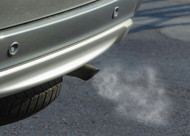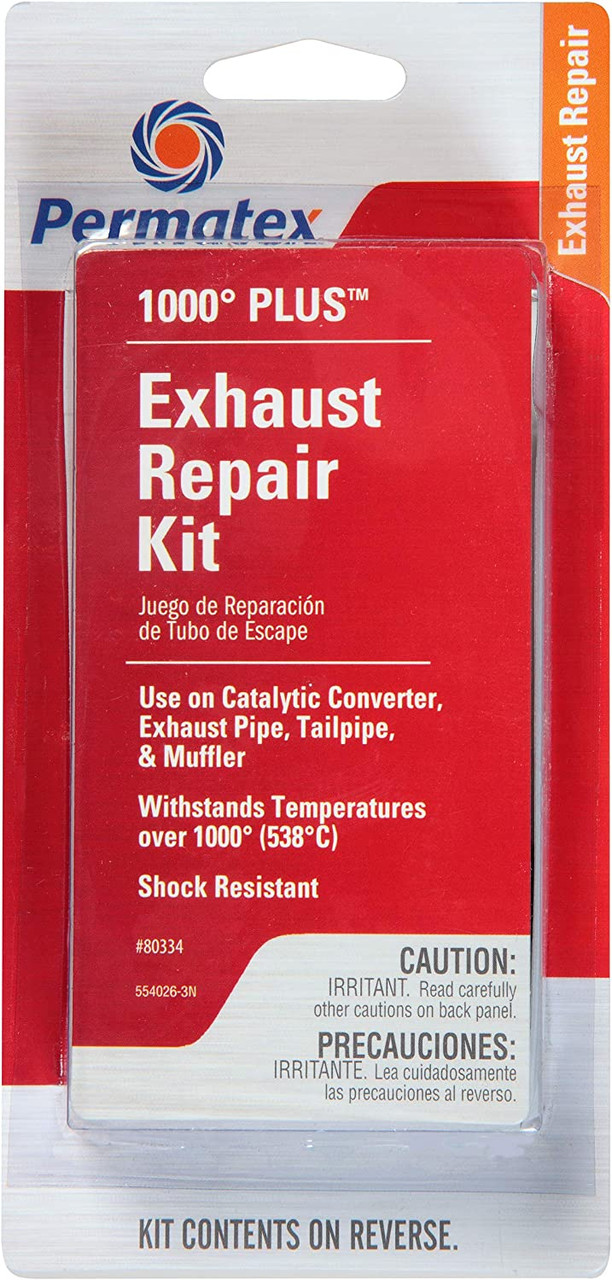3 Exhaust Leak Signs & 5 Simple Fixes for System Leaks
17th Apr 2024
An exhaust system leak can lead to decreased fuel efficiency, increased emissions, and a noisy ride. Recognizing the early signs of an exhaust leak is crucial to maintaining your vehicle’s performance and safety. Addressing an exhaust leak promptly prevents more serious problems down the road.
In this blog, we will discuss how to spot exhaust leak and outline a straightforward approach to exhaust leak fix. Let’s get started!
3 Signs of Exhaust System Leak
Here are 3 signs that indicate an exhaust system leak:
Increased Engine Noise
A clear indicator of an exhaust leak is a noticeable increase in engine noise. This sound can manifest as a roaring, rumbling, or hissing that seems to come directly from the engine or under the car. It is particularly evident when accelerating or starting the engine, as the pressure forces more exhaust gas through any breaches in the system.
Unusual Odors: Indicative of Potential Exhaust Leaks
When the exhaust system is compromised, exhaust fumes can escape from points other than the tailpipe. This can lead to a stronger smell of exhaust gases, which can be dangerous if inhaled over time. These fumes might enter the vehicle's cabin, making the smell especially noticeable inside the car and potentially posing health risks to the passengers.
Decreased Fuel Efficiency: How It Links to Exhaust Leaks?
An exhaust leak can significantly impact your vehicle’s fuel economy. The engine relies on a precise balance of air and fuel to operate efficiently, and a leak can disrupt this balance. As a result, you may find yourself visiting the gas station more frequently, as the engine compensates for the loss of pressure by consuming more fuel.
5 Simple Steps To Repair Exhaust System Leaks
Fixing an exhaust system leak can is a manageable task if you have the right tools and a bit of know-how. Here are five easy steps to help you address this common automotive issue:
Step 1: Precisely Locate the Source of the Exhaust Leak
First, you need to locate where the leak is coming from. Start your car and listen for any unusual noises like hissing or popping. Use your hand (but don't touch!) to feel for air escaping along the exhaust system, or visually inspect for any rust or holes, especially where parts connect and at the muffler.
Step 2: Prepare the Repair Area for Optimal Results
Once you've identified the leak, ensure the exhaust system is cool before you begin working on it. Clean the area around the leak thoroughly to remove any rust, dirt, or debris. This helps you get a better seal when you apply the repair materials.
Step 3: Use Sealing Techniques To Fix Minor Exhaust Leaks
For small holes or cracks, use an exhaust tape or repair paste. These materials are designed to withstand high temperatures and can be applied directly to the area. Ensure the application is tight and covers the entire leak to create a durable seal.
Step 4: Replace Severely Damaged Sections of the Exhaust
If the damage is too extensive for a simple patch, it might be necessary to replace sections of the exhaust pipe. Remove the damaged section with a hacksaw and replace it with a new piece using appropriate clamps and seals to ensure no new leaks occur.
Step 5: Test the Repair for Complete Assurance
After the repair or replacement, start your vehicle and listen for any signs of the leak continuing. Check for any escape of exhaust gases in the repaired area. If all sounds and functions normally, take a short test drive to ensure the repair holds under operating conditions.
Must Have Tools Required To Repair Exhaust System Leaks
Repairing exhaust system leaks efficiently requires a set of specific tools. Here are the must-have tools you'll need to tackle exhaust system repairs:
To safely access the underside of your vehicle, you'll need a jack to lift the car and jack stands to secure it in place. Never work under a car that is only supported by a jack; always use jack stands for safety.
Different sections of the exhaust system are held together with bolts and nuts. A good set of wrenches, including both metric and standard sizes, will allow you to loosen and tighten these connections as needed.
These are essential for adjusting components, removing clamps, or handling any small parts that might be part of the exhaust system assembly.
Exhaust hangers keep the exhaust system suspended underneath the vehicle. An exhaust hanger removal tool can make it easier to remove the old hangers and install new ones without causing damage.
Hacksaw or Metal Cutting Tools
If you need to remove a damaged section of the exhaust pipe, a hacksaw or other metal cutting tools will be necessary. Ensure the tool is capable of cutting through the metal of your exhaust system cleanly.
Heat-Resistant Sealant or Exhaust Repair Kit
For sealing any leaks, a high-quality, heat-resistant sealant or a specialized exhaust repair kit can provide a temporary or permanent fix, depending on the extent of the damage.
FAQs
1. How Do Exhaust Leaks Happen?
Exhaust leaks typically occur due to corrosion from moisture and chemicals, or physical damage like impact and vibration. Wear and tear over time can also degrade seals and gaskets, creating gaps. These factors together compromise the integrity of the exhaust system, leading to leaks.
2. Are Exhaust Leaks Dangerous?
Yes, exhaust leaks are dangerous as they can allow harmful gases like carbon monoxide to enter the vehicle's cabin, posing serious health risks. Additionally, leaks reduce the efficiency of the car's engine and exhaust system, leading to further mechanical issues.
3. How Does Exhaust Leak Affect Performance?
An exhaust leak can significantly impact a vehicle's performance by disrupting the pressure balance in the exhaust system, leading to a loss of engine power and efficiency. It also causes the engine management system to misread emission levels and airflow, affecting fuel economy.
Start YourExhaust Leak Fix Project With JB Tools
Begin your exhaust leak repair project with the right tools from JB Tools. Explore our extensive selection of high-quality, durable tools tailored for automotive repairs.





